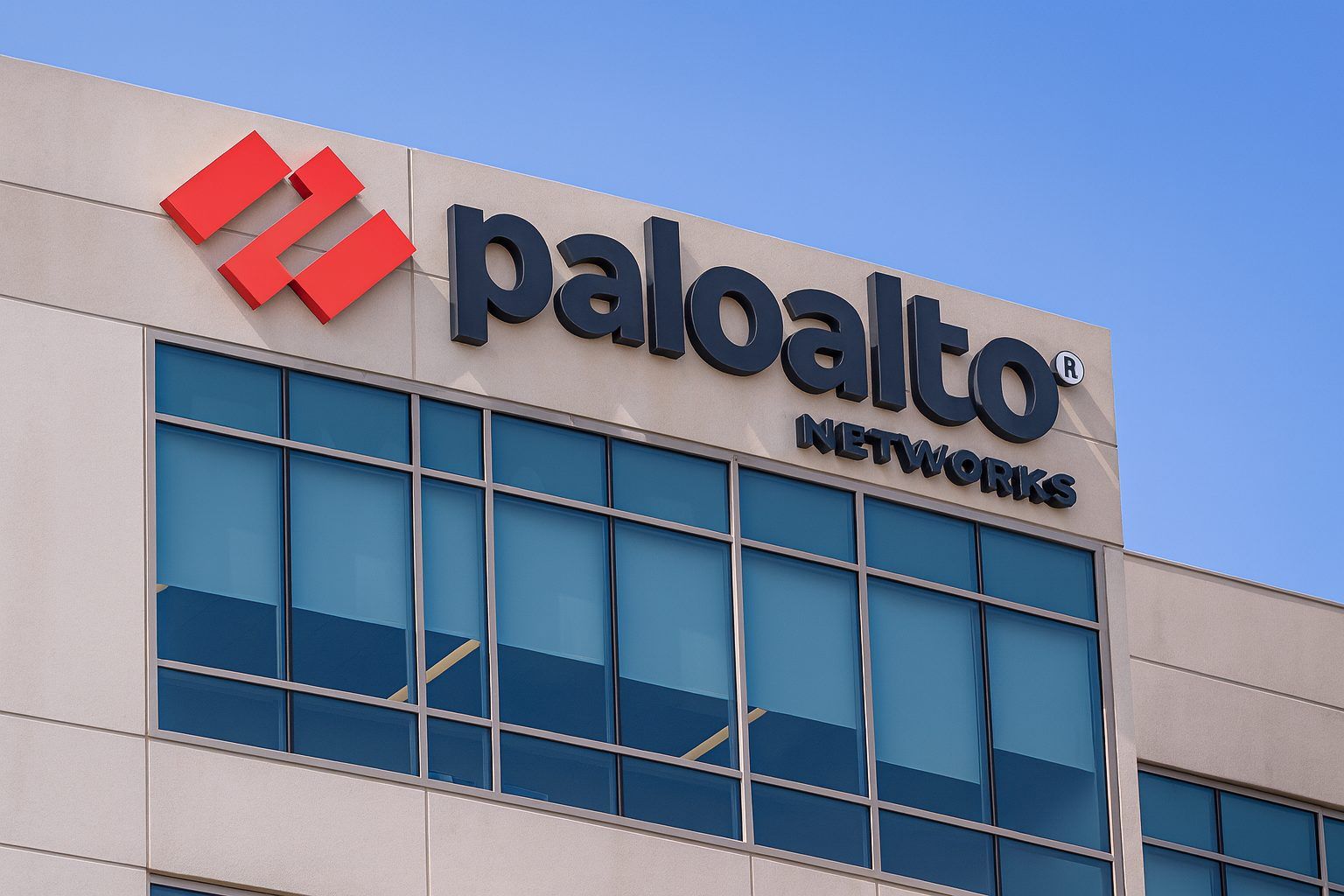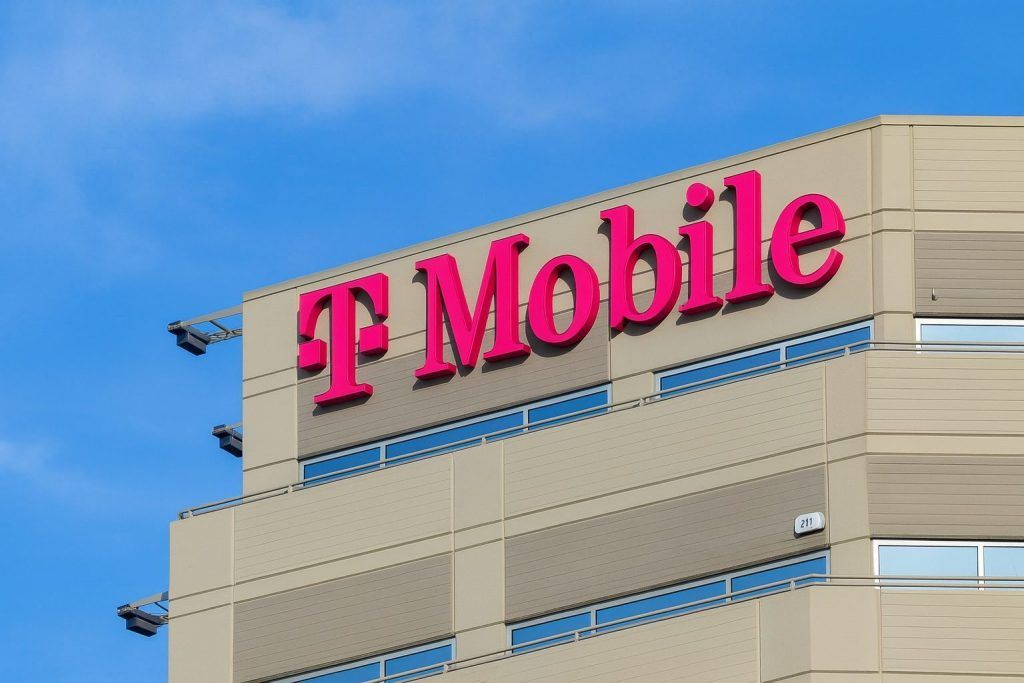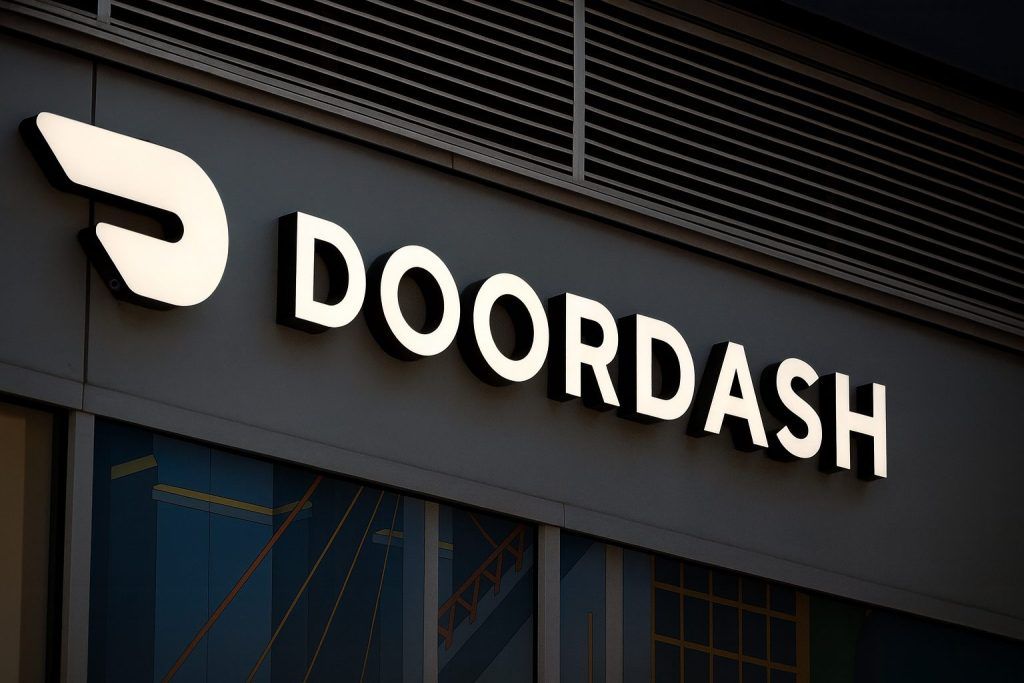As markets head into Wednesday, November 26, 2025, Palo Alto Networks, Inc. (NASDAQ: PANW) is trading in the shadow of a big earnings week and an even bigger AI-focused acquisition spree.
At Tuesday’s close, Palo Alto Networks stock finished around $186.3 per share, up roughly 1.3% on the day from a prior close near $183.9. [1] The move comes after a sharp post-earnings sell-off that dragged the stock down double digits in November even as the company delivered mid‑teens revenue growth and raised its fiscal‑year guidance.
Despite Tuesday’s bounce, PANW remains well below its 52‑week high of $223.61 and only comfortably above its 52‑week low of $144.15, leaving shares down mid‑single digits over the past year. [2] Investors are trying to decide whether this is a buy‑the‑dip opportunity in a leading AI‑driven cybersecurity name, or a richly valued stock now facing real execution and integration risk.
Below is a complete rundown of where Palo Alto Networks stock stands today, what’s driving the price, and what to watch on November 26, 2025.
Palo Alto Networks stock price today
Based on the latest available market data heading into Wednesday’s session:
- Last close (Nov 25, 2025): about $186.3, up ~1.3% on the day. [3]
- Day’s trading range (Tue): roughly $181.2 – $186.7. [4]
- Previous close: about $183.9. [5]
- 52‑week range:$144.15 – $223.61. [6]
- Volume: just under 6 million shares on Tuesday, slightly above its 3‑month average around 5.6 million. [7]
Performance context:
- Over the past month, Palo Alto Networks shares are down about 16.5%, versus roughly –1.2% for the S&P 500 composite and –10.3% for the Zacks security industry. [8]
- Over the past 12 months, PANW is modestly negative (around –4% to –6%), even after strong earnings and cash‑flow growth. [9]
In short, the stock is well off its late‑October highs and trading in the middle of its 52‑week range, with sentiment still fragile after a volatile reaction to Q1 results and the Chronosphere/CyberArk deal combo.
Earnings recap: Q1 FY 2026 beat and guidance raise
Palo Alto Networks reported results for its fiscal Q1 2026 (quarter ended October 31, 2025) on November 19. The numbers were objectively strong:
- Revenue: about $2.47 billion, up ~15.6–16% year over year, at the top end of management’s guidance range of $2.45–$2.47 billion and slightly above consensus estimates near $2.46 billion. [10]
- Adjusted EPS:$0.93, up about 19% from $0.78 a year earlier and ahead of guidance of $0.88–$0.90 and Street expectations of $0.89. [11]
- GAAP EPS: about $0.47, also slightly above expectations. [12]
Segment details highlight how broad the growth is:
- Service revenue (subscriptions + support): up 14% to more than $2 billion, with both subscription and support revenue growing at a similar pace. [13]
- Product revenue: jumped 23% to about $343 million, reflecting continued hardware demand even as the company pivots to platformized, subscription‑driven security. [14]
Key strategic metrics were equally robust:
- Next‑Generation Security (NGS) ARR: up 29% year over year to $5.85 billion, led by rapid adoption of SASE and cloud‑delivered security. [15]
- SASE ARR: up 34% to more than $1.3 billion, with SASE customers rising 18% to over 6,800. [16]
- XSIAM (AI‑driven security operations platform): number of deals doubled, including the company’s largest XSIAM contract to date — a $100 million deal with a U.S. telecom, $85 million of which goes to XSIAM. [17]
- Remaining performance obligation (RPO): climbed 24% year over year to $15.5 billion, reflecting strong visibility into future revenue. [18]
On cash flow, Palo Alto Networks looks more like a mature platform giant than a typical “growth stock”:
- Adjusted free cash flow (FCF) for Q1 2026 rose about 16.9% to $1.713 billion on revenue of $2.474 billion. [19]
- On a trailing‑twelve‑month basis, adjusted FCF margin reached a record 39.3%, up from 38% in the prior quarter. Management expects 38–39% FCF margin for the full fiscal year. [20]
Guidance: a “beat and raise,” but not enough for the market
Management nudged guidance higher:
- Fiscal 2026 revenue:
- Now: $10.50–$10.54 billion (about 14% year‑over‑year growth).
- Previously: $10.48–$10.53 billion (August outlook). [21]
- Fiscal 2026 adjusted EPS: now $3.80–$3.90 vs prior $3.75–$3.85. [22]
- Next‑Gen Security ARR (FY26):$7.0–$7.1 billion, implying 26–27% growth. [23]
- Non‑GAAP operating margin: forecast at 29.5–30.0%. [24]
So why did the stock drop after such healthy numbers?
Several commentators, including Motley Fool, Barron’s, Seeking Alpha and others, pointed to a familiar combination:
- Great fundamentals,
- Solid but not spectacular guidance, and
- A rich valuation that leaves little room for disappointment — especially when you suddenly announce tens of billions of dollars in M&A. [25]
AI, observability and identity: Chronosphere and CyberArk
The core story around Palo Alto Networks stock today is less about one quarter’s beat and more about its massive, AI‑first expansion into adjacent markets.
Chronosphere: $3.35 billion bet on observability
On November 19, alongside earnings, Palo Alto Networks announced that it will acquire Chronosphere, a cloud‑native observability platform, for $3.35 billion in a mix of cash and stock. [26]
Key details:
- Chronosphere’s annual recurring revenue (ARR) exceeded $160 million as of September 2025, implying a purchase price of nearly 21x ARR. [27]
- The company plans to integrate Chronosphere’s telemetry pipeline and observability stack into its Cortex AgentiX and broader AI platform, with the goal of creating an autonomous, agentic remediation system that blends security and observability data at petabyte scale. [28]
- Management pitched the deal as a way to push beyond traditional perimeter security into AI‑driven infrastructure monitoring, where the same data feeds can power both performance and security analytics.
Analysts generally see Chronosphere as a “highly regarded asset” with synergies with Palo Alto’s XSIAM and SOAR capabilities, but the high price tag has drawn scrutiny. [29]
CyberArk: a $25 billion identity security swing
Chronosphere isn’t the only big check Palo Alto is writing:
- Earlier in 2025, the company announced a roughly $25 billion acquisition of identity security leader CyberArk Software, a deal Reuters notes was approved by CyberArk shareholders and is expected to close in the second half of fiscal 2026, pending regulatory approvals. [30]
Stacking two very large, high‑multiple deals — one in observability, one in identity — on top of already rich valuation is a key reason the stock slipped more than 3% after hours on the day of the announcement, despite strong earnings. [31]
For long‑term investors, the logic is clear: if Palo Alto can successfully integrate CyberArk and Chronosphere into its platform, it strengthens its claim as the default AI‑era security and operations cloud. But in the near term, dilution, integration risk and regulatory timelines are all over the stock.
How Wall Street is reacting right now
Traditional sell‑side: mostly bullish, with higher targets
Recent analyst actions around PANW have been broadly constructive:
- Goldman Sachs: Maintained a “Buy” rating and raised its price target from $236 to $240 on November 21, citing confidence in Palo Alto’s growth trajectory and AI‑driven opportunity set. [32]
- BTIG: Analyst Gray Powell recently raised his target to $248 while reiterating a Buy, arguing that Chronosphere is a high‑quality asset with clear synergies and that PANW remains one of Wall Street’s “must‑watch AI stocks.” [33]
- Bernstein: Reaffirmed an Outperform rating on November 20, with a price forecast implying roughly 13% upside from recent levels. [34]
Across covering brokers:
- Consensus rating:“Moderate Buy” with 30 Buy, 9 Hold and 2 Sell ratings. [35]
- Average price target: about $225 per share, implying roughly 21–22% upside from the mid‑$180s. [36]
Zacks and quant views: strong business, but near‑term “Sell”
Zacks, which focuses heavily on earnings estimate revisions and valuation, is notably more cautious:
- Average brokerage recommendation (ABR):1.65 on a 1–5 scale (between Strong Buy and Buy), based on 49 firms, including 33 Strong Buys and 3 Buys. [37]
- Yet Zacks Rank:#4 (Sell) for PANW, reflecting downward revisions in EPS estimates over the past month. [38]
- Zacks notes that the consensus EPS for the current year has ticked down to about $3.83, still implying ~14–15% EPS growth, but with a modest negative revision trend. [39]
In a separate piece, Zacks highlights that PANW is one of the most heavily searched tickers on its platform recently, but warns that its Value Style Score is “F”, indicating that the stock trades at a premium to peers on standard valuation metrics. [40]
Free cash flow bulls: Barchart’s $212+ target
On the other side of the spectrum, a widely circulated Barchart analysis leans hard into Palo Alto’s cash‑flow story:
- Q1 2026 revenue up 15.7% to $2.474 billion,
- Adjusted FCF up 16.9% to $1.713 billion,
- TTM adjusted FCF margin at 39.3%, with management guiding to 38–39% for the full year. [41]
Using Street revenue estimates of about $10.53 billion for this year and $11.93 billion for next, the author projects next‑12‑month revenue of roughly $10.9 billion and, at a 39.5% FCF margin, NTM FCF near $4.3 billion. Applying a ~34x FCF multiple (in line with Palo Alto’s current TTM FCF multiple) yields a market cap estimate around $147.5 billion, implying a stock price near $212 — roughly 15–17% above recent trading levels. [42]
The takeaway from the Street:
- Directionally bullish about Palo Alto’s leadership in AI‑driven cybersecurity, platformization strategy and M&A positioning,
- But increasingly split on valuation and the near‑term risk/reward after the stock’s run‑up and recent pullback.
Valuation check: expensive, but cash‑rich
Even after the sell‑off, Palo Alto Networks is not a cheap stock by traditional metrics:
- P/E ratio: about 117x, well above both the broader market’s ~43x and the tech sector’s ~81x. [43]
- PEG ratio: roughly 4.3, suggesting a premium to projected earnings growth. [44]
- Price‑to‑book: about 15.8x, far above the level where many value investors start to get uncomfortable. [45]
At the same time, free cash flow is extraordinary:
- TTM adjusted FCF around $3.75 billion on a market cap near $128–129 billion, implying an FCF yield of roughly 2.9% — low in absolute terms, but unusually high for a company still delivering mid‑teens top‑line growth and expanding margins. [46]
Other notable datapoints:
- Earnings growth: consensus expects ~19% EPS growth over the coming year. [47]
- Short interest: about 6.8% of float sold short, with a days‑to‑cover ratio around 10.7, signaling cautious sentiment but also potential for volatility if the stock moves sharply. [48]
- Institutional ownership: nearly 80% of shares are held by institutions; insiders hold roughly 1–2% and have been net sellers over the past three months. [49]
Bottom line: PANW trades like a high‑quality, high‑multiple “compounder”. Bulls argue that its FCF machine and AI‑driven security platform justify the premium; bears counter that the stock’s valuation — now layered with large, expensive M&A — leaves little room for execution missteps.
Key risks for PANW stock in late 2025
Heading into November 26 trading, investors in Palo Alto Networks should keep several risk factors front of mind:
- Execution & integration risk
- Management now has to integrate two major acquisitions, Chronosphere and CyberArk, while keeping core platform growth and margins on track. Both deals are large and complex, particularly CyberArk at about $25 billion. [50]
- Valuation & dilution
- With a P/E north of 100x and PEG over 4, Palo Alto’s valuation already prices in years of double‑digit growth. Any slowdown, integration hiccup or macro shock could compress the multiple. [51]
- Both Chronosphere and CyberArk include equity components, meaning the share count will rise and the company must execute well just to keep per‑share metrics growing. [52]
- Estimate revision trends
- Despite healthy fundamentals, Zacks highlights downward revisions to near‑term EPS estimates and assigns PANW a Rank #4 (Sell), suggesting potential underperformance vs the broader market in the short run. [53]
- Competitive and macro pressures
- The cybersecurity market remains crowded, with rivals like CrowdStrike, Zscaler, Fortinet and others fighting aggressively for cloud, endpoint and identity share.
- While Reuters notes that cybersecurity spending has been resilient, it is still part of broader IT budgets that could come under pressure if macro conditions deteriorate. [54]
- Sentiment & technicals
- Barchart and others highlight that PANW is currently about 14–17% below its recent 52‑week high, with support levels around the low‑$180s and resistance near the high‑$180s to low‑$190s. [55]
- MarketBeat’s data shows elevated news flow and social sentiment, which often goes hand‑in‑hand with higher short‑term volatility. [56]
What to watch on November 26, 2025
For traders and longer‑term investors watching PANW today, here are the practical near‑term catalysts:
- Price action around key levels
- Support zones around $182–$183 and resistance near $188–$190 (based on recent technical levels) will be important intraday reference points. [57]
- Follow‑up commentary on Chronosphere and CyberArk
- Any new regulatory, integration or synergies commentary from management, large customers or regulators could move the stock abruptly, given how central these deals are to the investment story. [58]
- Analyst estimate and target revisions
- More houses could update models in the wake of Q1 results and the M&A announcements. Given how tightly valuation is wound, even small EPS or target changes may have an outsized impact. [59]
- Sector and AI sentiment
- PANW often trades in sympathy with high‑growth tech and AI names. Strong or weak days for large‑cap AI leaders and cybersecurity peers can spill over into Palo Alto’s tape. [60]
Bottom line: Palo Alto Networks stock today
As of November 26, 2025, Palo Alto Networks sits at a crossroads:
- The bull case leans on:
- The bear (or cautious) case stresses:
- Premium valuation (P/E ~117x, PEG >4),
- Large, expensive M&A that brings dilution and integration risk,
- Downward EPS estimate revisions, and
- A stock that, despite a recent pullback, is still priced for near‑flawless execution. [63]
Most Wall Street analysts still list Palo Alto Networks as a Buy, with consensus targets 20%+ above current levels. But quantitative frameworks like Zacks’ rank PANW as a near‑term Sell, and more valuation‑sensitive commentators urge caution even while acknowledging the company’s clear strategic strength.
For investors, Palo Alto Networks today looks like a classic high‑quality, high‑expectations growth stock:
- If its AI strategy, platformization and mega‑deals pay off, the current dip could prove attractive in hindsight.
- If integration proves messy or growth slows even modestly, the multiple leaves room for further downside.
Either way, PANW is likely to remain front‑and‑center on traders’ screens through the rest of 2025.
References
1. stockanalysis.com, 2. www.macrotrends.net, 3. stockanalysis.com, 4. www.investing.com, 5. stockanalysis.com, 6. finance.yahoo.com, 7. www.investing.com, 8. finviz.com, 9. www.investing.com, 10. www.nasdaq.com, 11. www.nasdaq.com, 12. www.gurufocus.com, 13. www.nasdaq.com, 14. www.nasdaq.com, 15. www.nasdaq.com, 16. www.nasdaq.com, 17. www.nasdaq.com, 18. www.nasdaq.com, 19. www.barchart.com, 20. www.barchart.com, 21. www.prnewswire.com, 22. www.reuters.com, 23. www.prnewswire.com, 24. www.prnewswire.com, 25. www.nasdaq.com, 26. www.reuters.com, 27. www.reuters.com, 28. www.reuters.com, 29. finviz.com, 30. www.reuters.com, 31. www.reuters.com, 32. www.gurufocus.com, 33. finviz.com, 34. www.nasdaq.com, 35. www.marketbeat.com, 36. www.marketbeat.com, 37. finviz.com, 38. finviz.com, 39. finviz.com, 40. finviz.com, 41. www.barchart.com, 42. www.barchart.com, 43. www.marketbeat.com, 44. www.marketbeat.com, 45. www.marketbeat.com, 46. www.barchart.com, 47. www.marketbeat.com, 48. www.marketbeat.com, 49. www.marketbeat.com, 50. www.reuters.com, 51. www.marketbeat.com, 52. www.reuters.com, 53. finviz.com, 54. www.reuters.com, 55. www.barchart.com, 56. www.marketbeat.com, 57. www.barchart.com, 58. www.reuters.com, 59. www.gurufocus.com, 60. seekingalpha.com, 61. www.barchart.com, 62. www.reuters.com, 63. www.marketbeat.com








